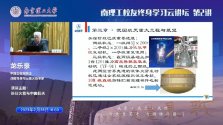The thing is, the only reason why spacex is going with a methane engine is because it’s relatively easy to synthesize on mars.
I think people are following SpaceX way too much here. Using a combination of LOX/Kerosene and LOX/LH2 provides the optimum
It's not just that. Firstly, the most important thing is the lack of coking, which a thing when using RP-1. This is important if you want your engine to be reused dozens or even hundreds of times, which is the case with starship. I'm not an expert on rocket engines, but I know that soot buildup is an issue for regular internal combustion engines, let alone the insane complexity and tolerance of rocket engines or cutting edge full flow staged combustion engines.
Secondly, the lack of coking means that extremely complicated engines like the full flow staged combustion engine are viable, FFSC engines are too complex and expensive to reuse if you were to cover their inner plumbing with soot every time you used them. Complex engines work a lot better with clean burning methane. Maybe this will not be an issue with more mature engine tech but FFSC are on the cutting edge of rocket science as it is, resuing them dozens of times while covering the insides with soot isn't going to bode well. Not when Spacex is planning on reusing starship more than a hundred times.
Thirdly, much easier storage compared to hydrogen and kerosene, since the boiling point of methane and oxygen aren't too far apart.
Fourthly, Methane is much easier to get than RP-1. Spacex plans to eventually make whatever methane they need on site using renewables to convert carbon dioxide to methane, on earth and on Mars, instead of the long refining process and supply chain needed to produce RP-1. Not to mention that America is swimming in natural gas anyway. So cheaper and easier. I also saw a old tweet from Elon stating that while Starship is using ultra-pure methane for now, the plan is to eventually have Starship just use regular consumer grade natural gas. So a lot cheaper, just compare the price of natural gas vs RP-1. And Hydrogen has a ton of issues too, even if it's perfomance is great on paper, just look at the amount of leaks every hydrogen rocket has.





